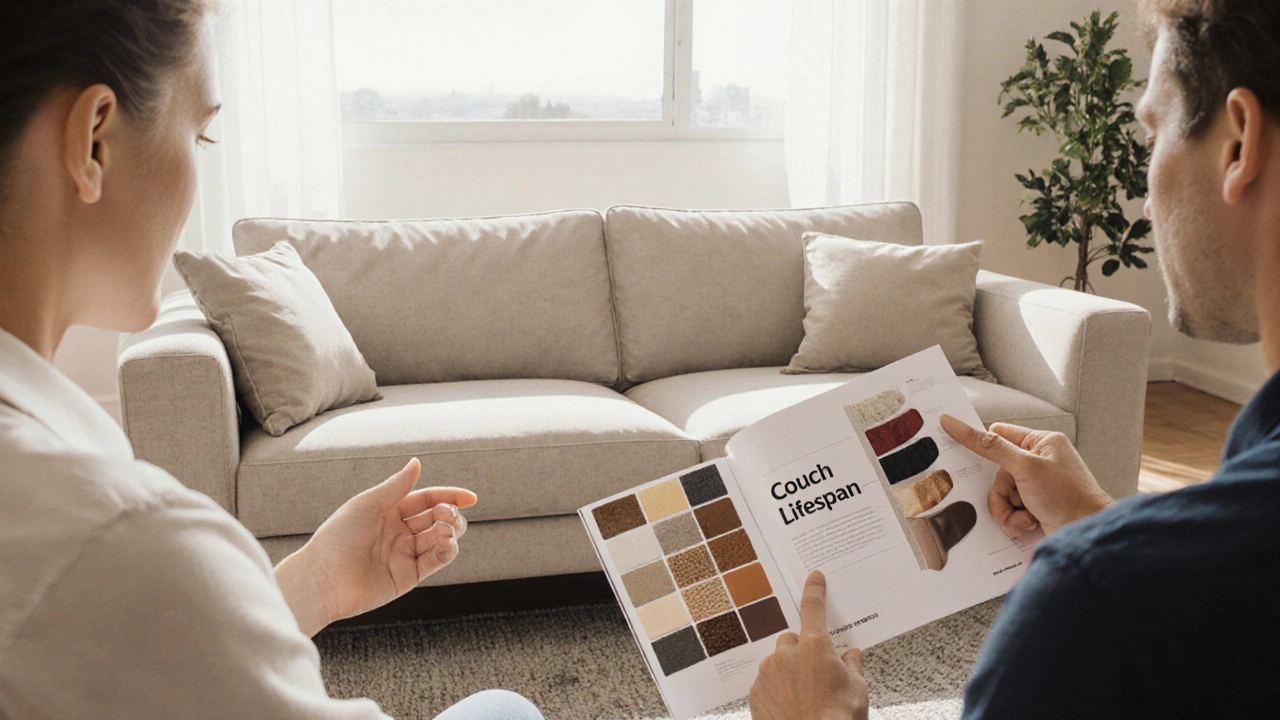Couch Lifespan: How Long Should Your Sofa Last?
When we talk about couch lifespan, the period a sofa remains comfortable, sturdy and visually appealing before it needs replacement. Also known as sofa lifespan, it helps anyone weighing a purchase decide if the cost matches long‑term value. Understanding Sofa durability, how well a sofa withstands daily wear, weight and environmental stress is the first step toward a smart investment.
Key Factors That Shape a Couch’s Longevity
Every couch is a mix of Frame construction, the type of wood or metal skeleton that bears the weight of the cushions and sitters and Upholstery material, fabric, leather or synthetic covering that protects the inner fillings. Hard‑wood frames such as kiln‑dried oak or maple resist warping far better than particle board, especially in humid UK homes. Meanwhile, high‑grade leathers and tightly woven performance fabrics shrug off spills, pet claws and sun fading, extending the visible life by years. The cushion core—often high‑density foam or pocketed springs—also matters; foam that retains its shape after 5,000 sits keeps the seat comfortable, while low‑density foam collapses quickly, shortening the overall couch lifespan.
Beyond the core build, the finish and joinery play hidden roles. Dovetail or mortise‑and‑tenon joints distribute stress evenly, reducing creaks. Protective sealants on wooden frames guard against moisture, which otherwise accelerates rot and weakens the structure. In contrast, glued‑in metal brackets can loosen over time, especially if the sofa is moved frequently. Selecting a couch with solid joinery and a finish suited to your climate is a proactive way to add a decade or more to its service life.
Usage patterns directly influence wear rates. A family of four with active children will subject the seat springs to higher cyclic loads than a single occupant. Pets, especially large dogs, add point pressure that can wear seams and distort cushions faster. Placing the couch on a level surface with a rug or mat reduces foot traffic damage and shields the legs from scratches. Regularly rotating cushions and vacuuming fabric removes grit that would otherwise grind into fibers, slowing upholstery wear. Simple maintenance habits therefore become a multiplier for couch lifespan.
When you’re ready to choose, consider the broader category of Furniture materials, the raw resources like hardwood, engineered wood, metal, and synthetic composites used across the piece. Each material brings its own durability profile: solid hardwood outranks MDF in load‑bearing tasks, while powder‑coated steel frames excel in resistance to humidity and pests. Pairing the right material with proper finish and construction yields a sofa that can survive kids, pets, and the occasional spill without losing its shape or style.
Below, you’ll find a curated set of articles that dive deeper into each of these aspects. From spotting cheap couch red flags to comparing the most durable sofas of 2025, the collection gives you actionable tips, real‑world comparisons, and maintenance guides that let you predict and extend your couch’s lifespan with confidence.
Couch Lifespan: How Long Does a Sofa Really Last?
Learn how long a couch typically lasts, the factors that affect its lifespan, and simple maintenance tips to keep your sofa looking and feeling great for years.
More
